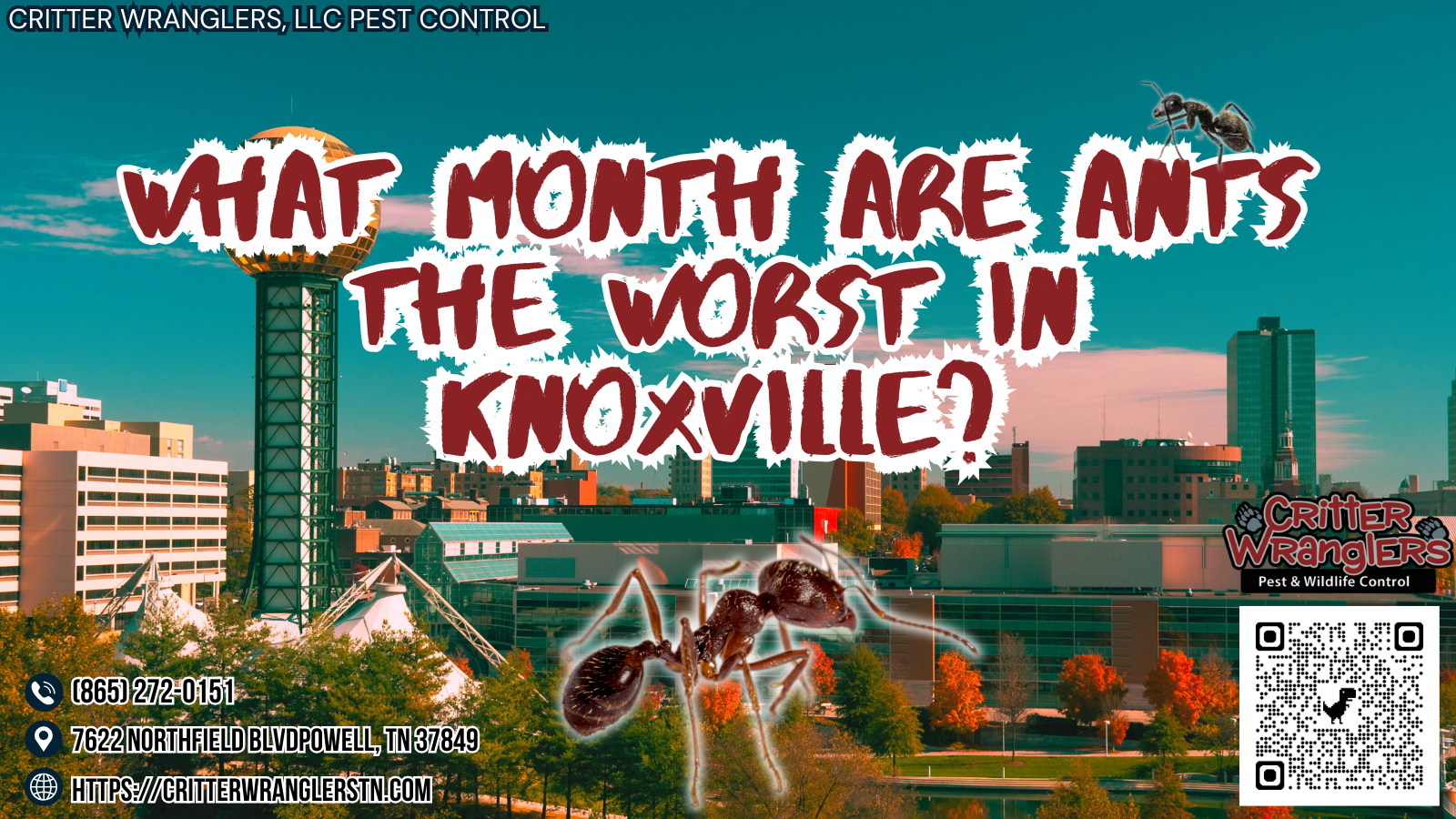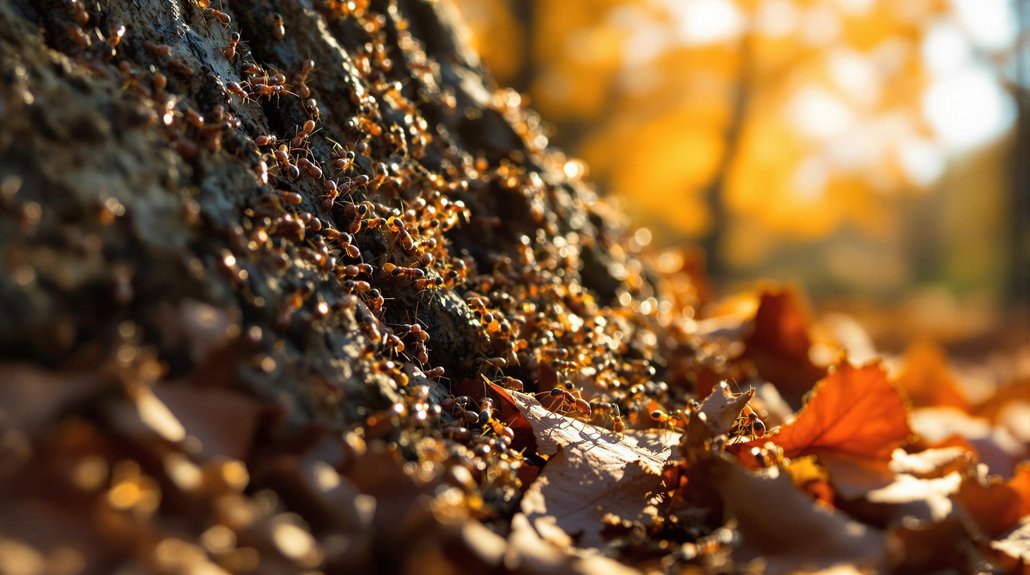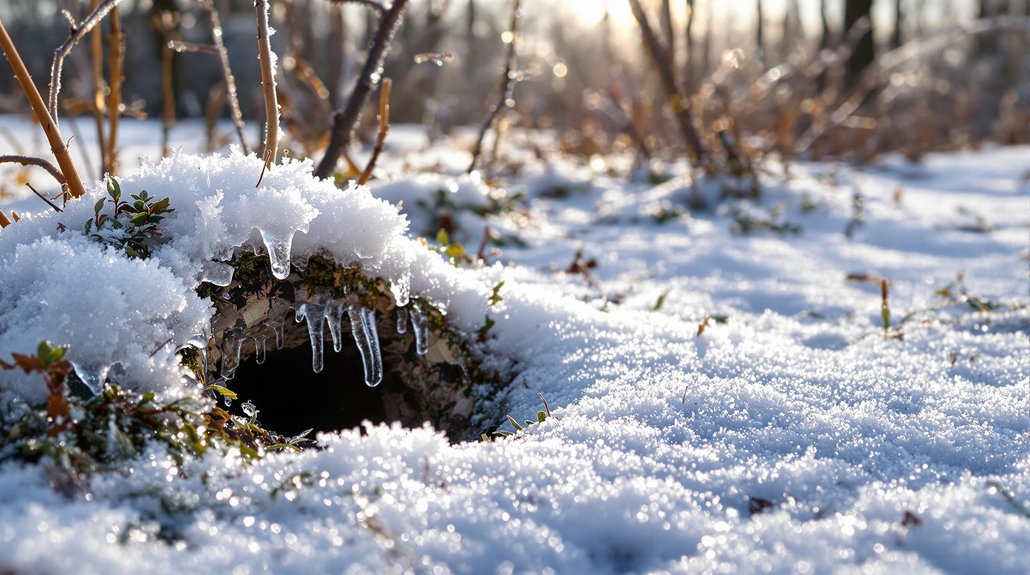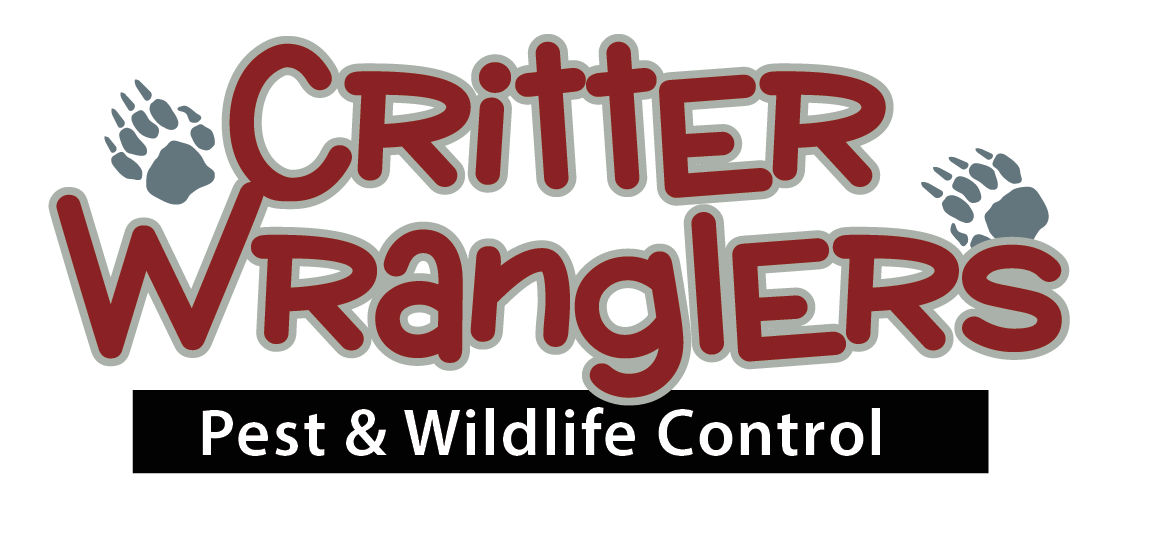Critter Wranglers, LLC Blog
Have an issue? Contact us today

What Month Are Ants the Worst in Knoxville?
In Knoxville, ants are most active during late spring and summer. Their peak activity generally occurs in May and June. Warmer temperatures lead to increased foraging and nesting behavior. Homeowners often notice a rise in ant sightings during this period. Understanding this pattern can help with prevention and management. For those seeking more information on ant behavior and prevention strategies, there are several tips and insights to explore further.
Key Article Highlights
- Ant activity peaks in Knoxville during the warmer months, especially from late spring through early fall.
- June and July typically see the highest ant sightings due to increased temperatures and food availability.
- Fall marks a surge in foraging behavior as ants prepare for winter, leading to increased visibility.
- Understanding local species is crucial for homeowners to manage infestations effectively during peak months.
- Preventive measures should be taken early in spring to mitigate potential infestations in the summer months.
Understanding Ant Behavior Throughout the Year
As the seasons change, ant behavior in Knoxville shifts considerably. During spring, ants emerge from their colonies, driven by warmer temperatures. They begin to explore their surroundings and search for food. Ant communication methods, such as pheromones, become more active, helping them locate resources and navigate their environment. In summer, colonies grow, and ants become more aggressive in their foraging activities. Seasonal mating habits occur in late summer, when winged males and females leave their nests to mate. After this, the new queens find places to establish colonies. In fall, ants prepare for winter by storing food and reducing activity. Finally, in winter, most ants enter a dormant state, waiting for spring to resume their activities.
Peak Ant Activity in Spring
In spring, ant activity reaches its highest levels. This increase is influenced by nesting patterns, weather conditions, and the availability of food sources. Understanding these factors helps explain why ants are more visible during this season.
Spring Nesting Patterns
Spring brings a noticeable surge in ant activity as colonies emerge from their winter dormancy. During this season, ants engage in spring foraging, seeking food sources to support their growing populations. Colony expansion is a key focus, as the queen lays more eggs, and workers search for nourishment.
The following table illustrates the typical spring nesting patterns of common ant species in Knoxville:
| Ant Species | Activity Level |
|---|---|
| Carpenter Ant | High |
| Fire Ant | Moderate |
| Sugar Ant | High |
| Thief Ant | Low |
| Pavement Ant | Moderate |
Understanding these patterns helps homeowners anticipate ant behavior and take preventive measures against infestations.
Weather Influence Factors
Weather conditions greatly impact ant activity during the spring months. As temperatures rise, ants become more active, searching for food and expanding their colonies. Weather patterns, such as rainfall and humidity, also influence their behavior. Warm, wet springs can lead to a surge in ant populations, as these conditions favor nesting and foraging. Climate change further complicates this dynamic, altering traditional weather patterns and potentially shifting ant activity. Unpredictable temperature fluctuations can cause ants to emerge earlier or later than usual, affecting their life cycle. Understanding these weather influence factors is essential for predicting peak ant activity in Knoxville. This knowledge helps residents prepare for increased ant presence, especially during the warmer spring months.
Food Sources Abundance
Food sources play an essential role in the peak activity of ants during spring. As temperatures rise, ants become more active in their foraging efforts. This increased activity is largely driven by the abundance of food available after winter. During this time, ants face significant food competition from other colonies, making their foraging strategies vital for survival.
- Ants search for sugary substances from flowering plants.
- Protein sources become available from insects and decaying organic matter.
- Nesting sites often coincide with plentiful food sources.
The high availability of food allows ants to build their colonies and stockpile resources. As a result, the spring months see a surge in ant populations and activity in Knoxville, impacting both their behavior and interactions with the environment.
Summer Surges: Ants on the Move
As temperatures rise in Knoxville, ants become increasingly active, marking the onset of summer surges. Various ant species engage in seasonal migration during this time, seeking food and nesting sites. Homeowners may notice a spike in ant activity as colonies expand.
| Ant Species | Activity Level | Seasonal Migration |
|---|---|---|
| Carpenter Ants | High | Yes |
| Fire Ants | Very High | Yes |
| Pavement Ants | Moderate | No |
These migrations often lead to increased sightings of ants in homes and gardens. Understanding these patterns can help in managing infestations effectively. Awareness of the local ant species is essential to address the summer surge promptly.
Fall: The Last Push Before Winter

As fall arrives in Knoxville, ant activity reaches its peak. With food sources becoming scarce, ants work hard to gather supplies for winter. Their nesting behavior also changes as they prepare for the colder months ahead.
Ant Activity Peaks
During the fall season, ant activity in Knoxville reaches its peak. Various ant species become more active as they prepare for the winter months. This seasonal variation in behavior is essential for their survival.
- Ants gather food and resources before temperatures drop.
- Colonies expand their foraging efforts to store supplies.
- Nesting behaviors shift as they seek shelter from the cold.
As the weather cools, ants become more aggressive in their search for food and shelter. Homeowners may notice increased ant sightings during this time. Understanding these patterns can help in managing ant populations effectively. Recognizing the peak activity can lead to better prevention strategies before winter sets in, ensuring homes remain ant-free.
Food Sources Scarcity
With the peak ant activity in Knoxville signaling the onset of fall, food sources become increasingly scarce. As winter approaches, ants face significant food scarcity. This scarcity leads to heightened resource competition among the colonies. Ants begin to search more aggressively for available food, resulting in increased activity near human habitats.
| Food Source | Availability |
|---|---|
| Sugar | Low |
| Protein | Moderate |
| Oils | Low |
| Seeds | Low |
| Fruits | Very Low |
During this time, ants may invade homes in search of sustenance. Understanding this behavior helps residents prepare and manage ant presence effectively.
Nesting Behavior Changes
Ant colonies in Knoxville exhibit notable changes in nesting behavior as fall progresses. With the arrival of cooler temperatures, ants prepare for the winter months. This season marks an important time for ant nesting, as colonies work to secure their survival.
- Ants often relocate their nests to deeper ground for insulation.
- Increased foraging occurs as ants gather food to store.
- Colonies may become more aggressive in defending their territory.
These seasonal changes signal a last push for ants before winter. The urgency to collect resources and establish secure nesting sites becomes essential. Understanding these behaviors can help residents manage ant populations effectively during this shifting period.
Winter: Ants in Hibernation

How do ants survive the cold winter months? During winter, ants enter a state known as ant hibernation. This process is essential for their winter survival. As temperatures drop, ants retreat into their nests, often found deep underground or in protected areas. Here, they slow down their metabolic processes, conserving energy until warmer weather returns. Most ant species will not leave the nest during this time, relying on stored food reserves or the heat generated by their colony. While many people may not notice ants in winter, they remain alive and dormant, waiting for spring to emerge and resume their activities. Understanding this hibernation behavior helps explain the seasonal patterns of ant activity in Knoxville.
Tips for Preventing Ant Infestations
As winter ends and temperatures rise, ants become more active and may seek food and shelter indoors. To prevent ant infestations, homeowners should adopt several effective strategies.
- Keep clean surfaces to eliminate food sources.
- Seal entryways to block ants from entering homes.
- Proper storage of food in airtight containers is essential.
Additionally, eliminating moisture around the home can deter ants, as they are drawn to damp areas. Regular inspections of the property can help identify potential ant entry points. Utilizing natural repellents can also provide an eco-friendly option for pest control. Implementing these landscaping tips can make outdoor spaces less inviting for ants, therefore reducing the likelihood of indoor invasions.
Frequently Asked Questions
What Types of Ants Are Most Common in Knoxville?
What ant species dominate Knoxville's landscape? Common types include carpenter ants and pavement ants, each exhibiting distinct behavior patterns. Understanding these species provides insight into their roles in the ecosystem and potential pest management strategies.
How Do Weather Conditions Affect Ant Activity?
Weather conditions greatly influence ant activity. Temperature fluctuations and changing weather patterns can alter their foraging behavior, nesting habits, and overall population dynamics, leading to increased visibility during certain periods and decreased activity at others.
Are Certain Neighborhoods More Prone to Ant Infestations?
In a world reminiscent of vintage maps, certain neighborhoods display unique characteristics influencing ant infestations. Urban areas, with their dense structures, often face more problems than rural locales, which typically provide fewer conducive conditions for these pests.
What Are the Best Natural Remedies for Ant Control?
Natural remedies for ant control include using natural deterrents like vinegar and essential oils such as peppermint or tea tree oil. These substances can effectively disrupt ant trails and prevent infestations without harmful chemicals.
Do Ants Pose Any Health Risks to Humans?
Ants can pose health risks to humans, primarily through ant bites. Some individuals may experience allergic reactions, which can lead to swelling or irritation. Generally, the risk is low, but caution is advised when interacting with ants.
